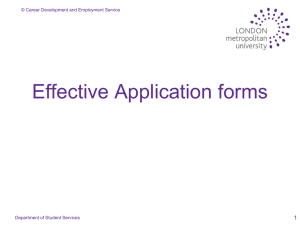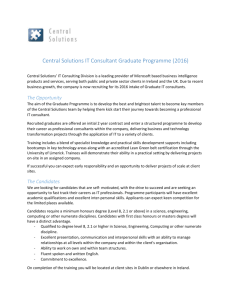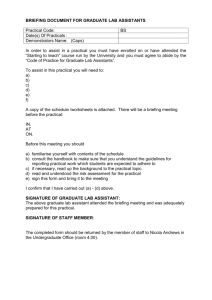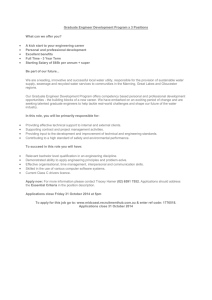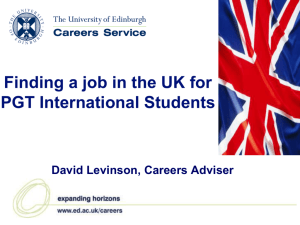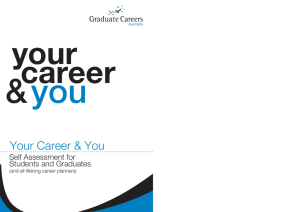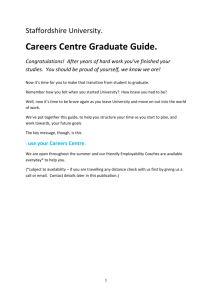A Process for Career Planning
advertisement
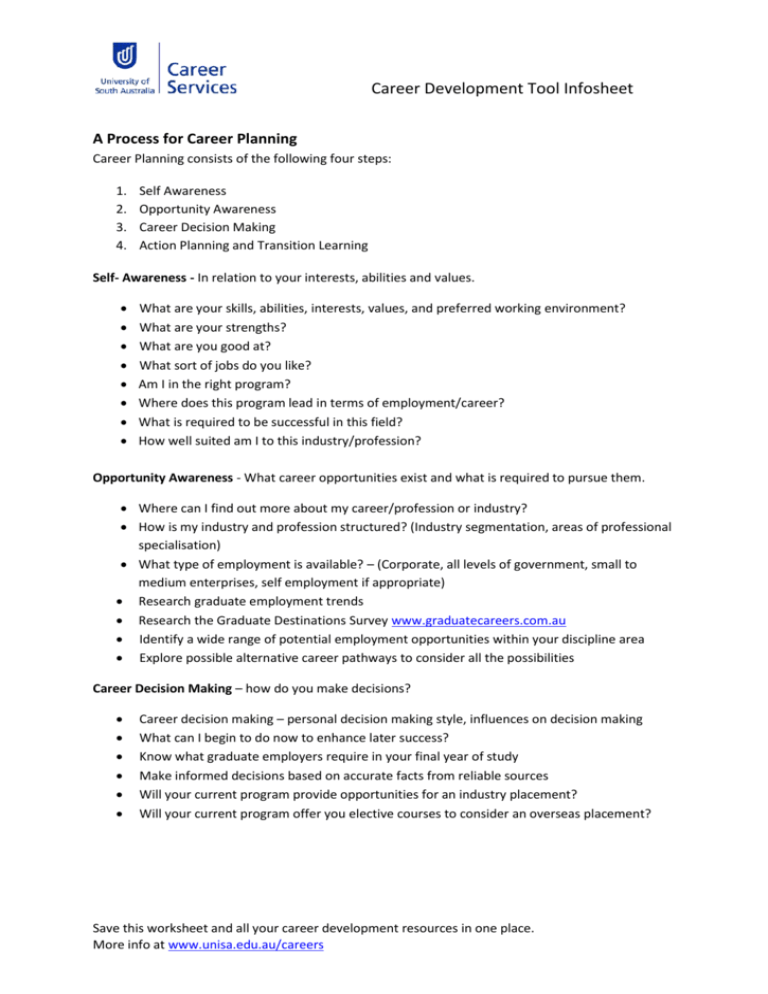
Career Development Tool Infosheet A Process for Career Planning Career Planning consists of the following four steps: 1. 2. 3. 4. Self Awareness Opportunity Awareness Career Decision Making Action Planning and Transition Learning Self- Awareness - In relation to your interests, abilities and values. What are your skills, abilities, interests, values, and preferred working environment? What are your strengths? What are you good at? What sort of jobs do you like? Am I in the right program? Where does this program lead in terms of employment/career? What is required to be successful in this field? How well suited am I to this industry/profession? Opportunity Awareness - What career opportunities exist and what is required to pursue them. Where can I find out more about my career/profession or industry? How is my industry and profession structured? (Industry segmentation, areas of professional specialisation) What type of employment is available? – (Corporate, all levels of government, small to medium enterprises, self employment if appropriate) Research graduate employment trends Research the Graduate Destinations Survey www.graduatecareers.com.au Identify a wide range of potential employment opportunities within your discipline area Explore possible alternative career pathways to consider all the possibilities Career Decision Making – how do you make decisions? Career decision making – personal decision making style, influences on decision making What can I begin to do now to enhance later success? Know what graduate employers require in your final year of study Make informed decisions based on accurate facts from reliable sources Will your current program provide opportunities for an industry placement? Will your current program offer you elective courses to consider an overseas placement? Save this worksheet and all your career development resources in one place. More info at www.unisa.edu.au/careers Career Development Tool Infosheet Action Planning and Transition Learning - Take Action! Make a plan for your study and transition into the graduate workforce. Set Career Goals for First Year, Second Year and Third/Final Year of study. Identify employers to approach for work experience to maximise chances of graduate employment. Draft a Career Plan and discuss this plan with a UniSA Career Adviser Remuneration and Skills Assessment Job Search Strategies – consider both visible and hidden employment options How can professional recruitment firms help me? How do I prepare a professional and marketable resume? Understand recruitment and selection processes – resume, application letter, addressing selection criteria, job and person specifications, selection interviews, types of interviews, assessment centres, graduate recruitment processes Action Plan for students In First Year Register on UniSA Career Hub READ weekly careers email – employers are open to taking work experience students Attended Employment and Careers Expo Attend Employer Presentations on Campus Identify employers to approach for work experience during November – February holidays. Sign up for Industry Professional Association Newsletters In Second Year Consider program options, major, minor elective options Consider saving an elective for Student Exchange overseas for an international perspective – looks great on the resume! Attended Employment and Careers Expo Attend Employer Presentations on Campus Network – talk to employers Secure work experience for November – February holidays In Third Year Graduate Applications Open March – April at the beginning of your final year! Identify, Shortlist and apply for Graduate Programs Attended Employment and Careers Expo Attend Employer Presentations on Campus Save this worksheet and all your career development resources in one place. More info at www.unisa.edu.au/careers


